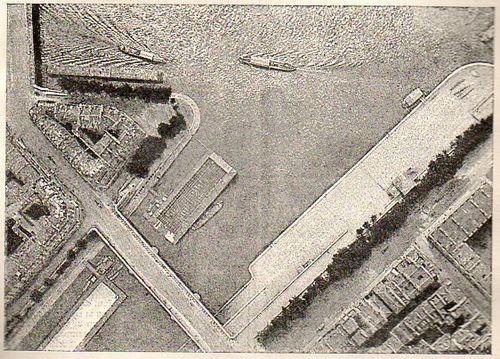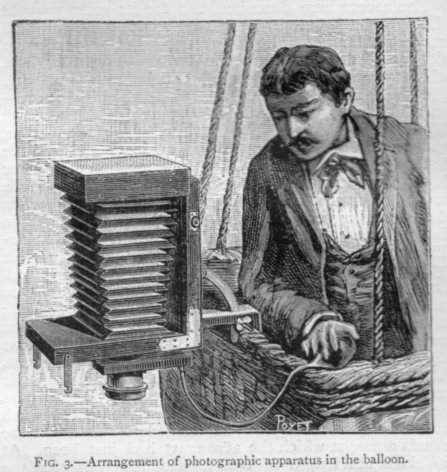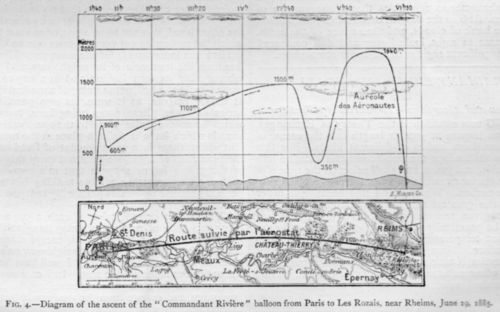JF Ptak Science Books Post 2195
There are many posts to this blog on this Looking Straight Down topic--just enter this phrase in the search box at left for a list.
The idea of representing a view straight down, of looking straight down from some height, is a relatively recent occurrence, this view being somewhat rare in the antiquarian world pre-balloon or pre-heavier-than-air flight. The pre-human-flight reason for its scarcity is understandable, but even after the first Montgolfier ascension in 1787, there’s another 120+ years of scarcity yet to come before these views would start to pop up in common (and uncommon) literature.. Now I’m not talking about cartography, which is basically a straight-down view of the world—what I’m referring to is that same view but not as a map per se, but what you would see if you were dangling out of a plane or balloon. It is an unusual and scarce perspective.
This series of images was found in Nature (September 3, 1885, and already well established and in its third decade of publication) and shows a very scientific exploration of looking straight down. The images show the pioneer and bibliophile Gaston Tissandier and his equipment and their position in the research balloon engaged in "photographic aerostation". Their experimentation was a clear success, the results of which were immediately applied to cartography, with the journal reporting "aerostatic photography has a great future". And so far as the looking-straight-down part is concerned, it certainly crytalizes a moment in time in that part of visual history.
And the cross-section of the map showing the progress of the Tissandier expedition and of the progress of looking straight down:






Comments